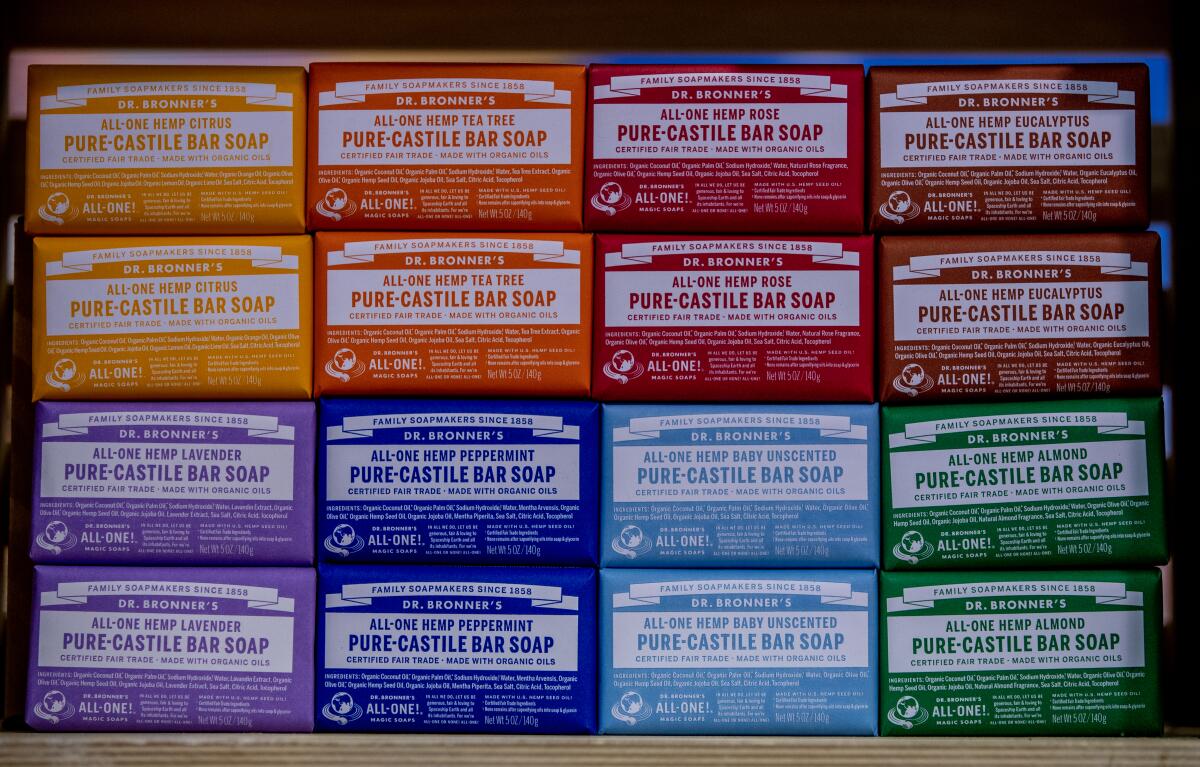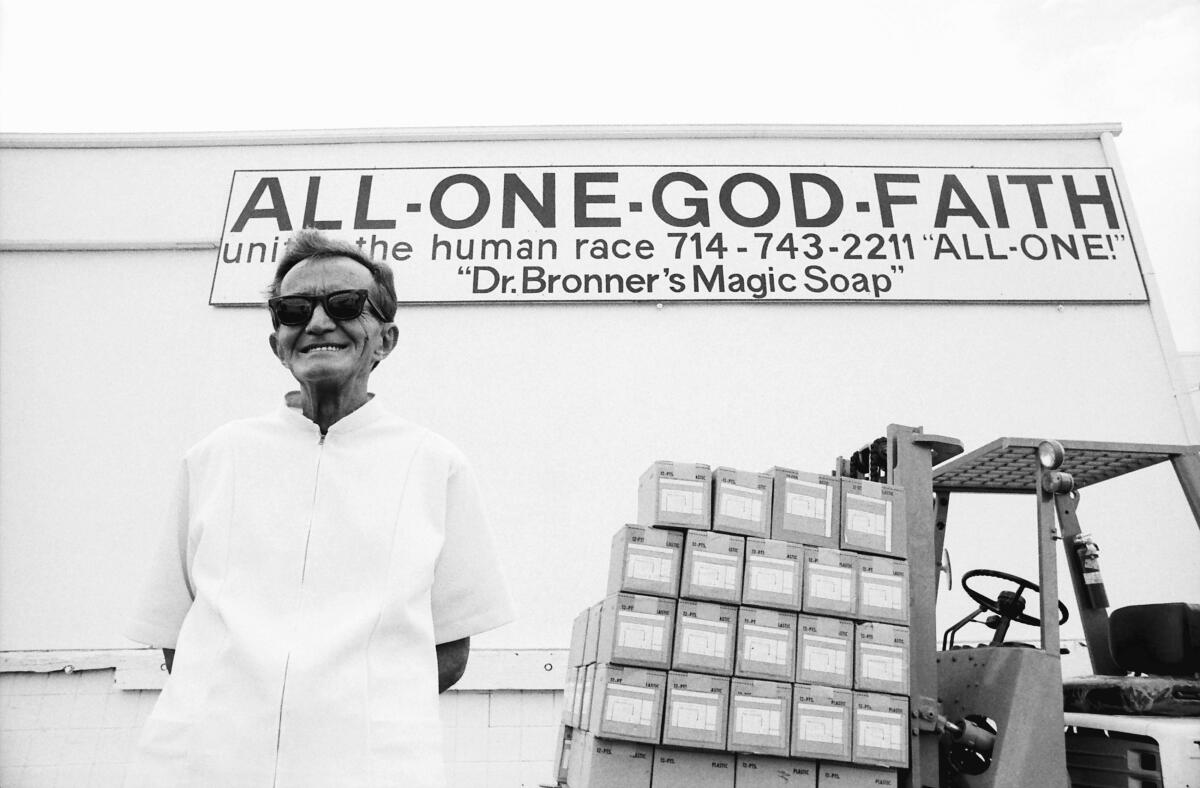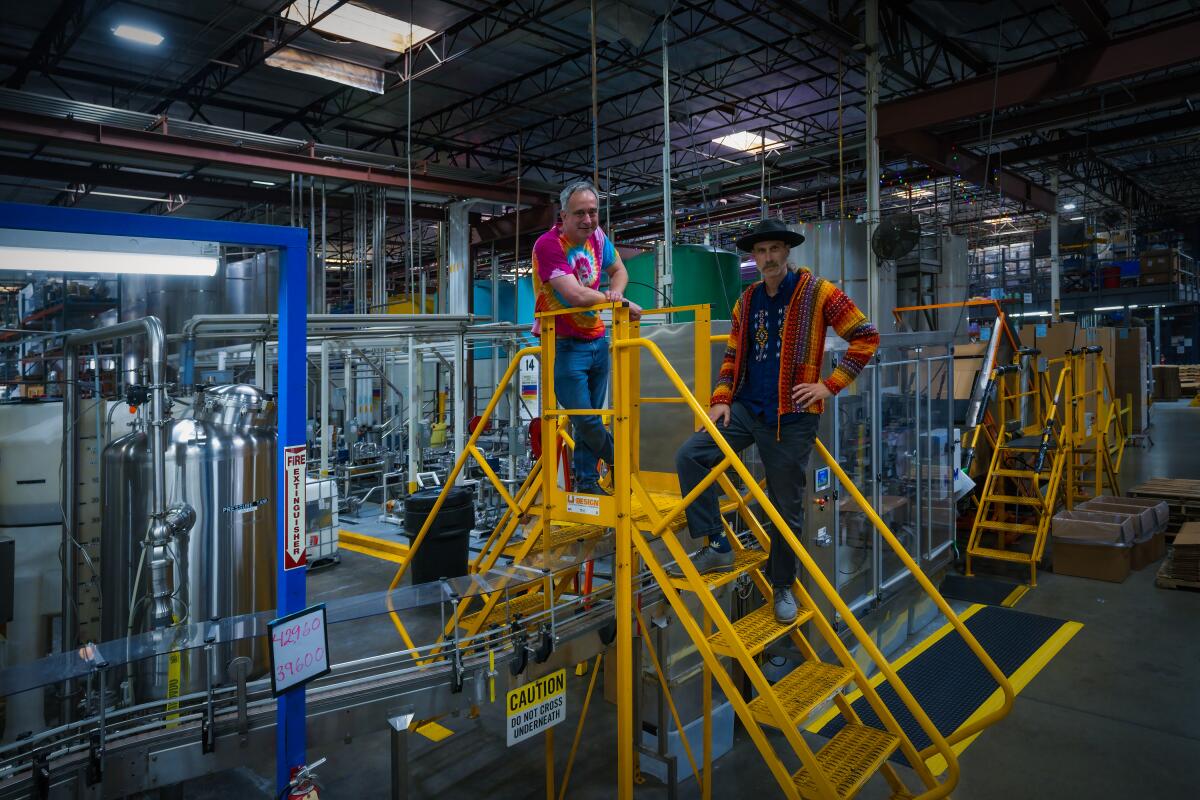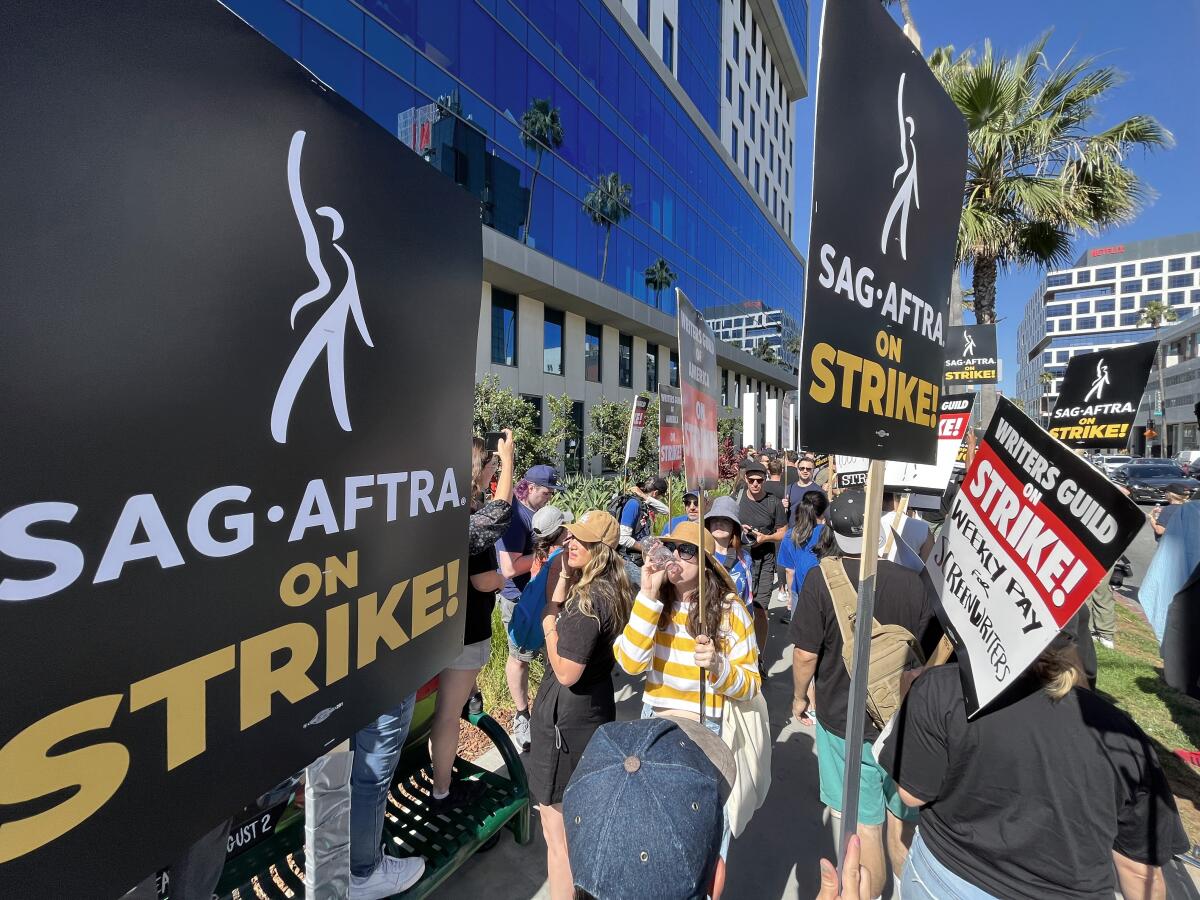Dr. Bronner’s rise from subculture suds to California soap powerhouse

- Share via
Good morning, and welcome to the Essential California newsletter. It’s Monday, July 17.
Part of California’s lasting allure is the idea that fame, fortune, destiny, joy and anything else one’s heart desires is awaiting anyone who makes it out West to the Golden State.
That clearly isn’t true for everyone chasing their initial or ideal California dream, but over the decades, enough people have “made it” — or made something — that the romantic dream stays alive.
One example of that California success story: Dr. Bronner’s Magic Soaps, a product with 18 official uses — and many more that are unofficial or outlandish.
“Dr. Bronner’s soap, initially rooted in counterculture and relegated to the shelves of health food stores, is now sold at major U.S. retailers and in 40 countries, with a bottle or bar sold every 0.95 of a second,” my colleague Andrea Chang wrote in the first installment of The Times’ new series “Created in California,” which aims to chronicle the state’s iconic companies and cult brands.
The company was founded in 1948 by Emanuel Bronner, who was not a real doctor. But the roots of Bronner’s business trace back to early-1900s Germany, where soap already ran in his family.
He was born Emanuel Heilbronner in 1908 to Jewish German soap makers. He nixed the “Heil” out of his family name after Hitler rose to power, and immigrated to the U.S. at age 21. His parents were killed in Nazi concentration camps during the Holocaust.

Bronner settled for a time in Chicago. Then, as the family legend goes, he was committed to and ultimately escaped from a mental health facility, made his way to Las Vegas, won enough money to make it to Los Angeles and got an apartment in Pershing Square.
“Eccentric” would be a fair adjective to describe Bronner, who long espoused his strong spiritual beliefs, later codified as the “The Moral ABC.” His basic ethos: All lifeforms on Earth (“Spaceship Earth,” he called it) are connected and should unite in harmony, no matter religion or ethnicity.
The business that became Dr. Bronner’s took shape in 1948 when he started mixing gallons of peppermint castile soap from his apartment building. Initially, the soap was more of a side project for when he wasn’t out preaching his personal ethos in public.
But, as Chang writes, “what had begun as a way for the third-generation soap maker to propagate his spiritual message — by printing it onto the labels of the bottles in dense blocks of tiny script — became the top-selling natural soap brand in the country, with deep footholds among hippies, campers, backpackers, vegans, hikers, moms, gardeners and other niche groups.”
Fast-forward to last year, when Bronner’s grandsons David and Mike co-led the company to $170.3 million in annual revenue.

“We feel like we’re custodians of this amazing legacy,” Mike Bronner told Chang, “and we want to make sure that we don’t just rest on the shoulders of our grandfather.”
The two brothers have an equal partnership in the family business, which has its headquarters and soap factory in Vista. The company has more than 300 employees and maintains a salary cap on top executives so they can’t make more than five times the salary of their lowest-paid full-time permanent workers.
That ethical stand also carries into the company’s political ideology, which it does not shy away from. Chang reports:
Dr. Bronner’s in its modern era has evolved into a vehicle for outright activism. It pledges that “all profits not needed for business [are] dedicated to progressive causes and charities.” Last year that amounted to $8.7 million given away, more than a third of its bottom line.
That money has gone to hundreds of nonprofit organizations, including groups that do work on environmental conservation, drug policy reform, income equality, animal welfare, Black Lives Matter and LGBTQ+ rights.
“We take stands that aren’t popular with everybody,” David Bronner told her. “People say, ‘Why don’t you just make soap?’ But then our other customers are like, ‘Do you have any idea who these people are? This is what they do.’”
You can read Chang’s subscriber exclusive on Dr. Bronner’s (you’re a subscriber, right?) on The Times’ website.
And now, here’s what’s happening across California:
Note: Some of the sites we link to may limit the number of stories you can access without subscribing.
CALIFORNIA CULTURE

The historic joint strike by actors and writers comes at a precarious time for the big Hollywood studios, which saw stock prices fall as the actors guild joined picket lines Friday. Disruption is the point, of course, and as Times senior entertainment writer Meg James explained, the work stoppage “has taken on the trappings of a larger cultural clash, ostensibly pitting everyday workers against top wage earners, America’s 1%.” Los Angeles Times
For many SoCal Latinos, rock en español is a cross-generational nostalgic force. “These songs have made us sing and dance, but what about their lyrics?” Times contributor and UC Riverside assistant professor Jorge N. Leal asked in De Los. He unpacked the music’s sociopolitical context. Los Angeles Times
L.A. STORIES
For more than two years, the Los Angeles Police Department refused to name the officers who were involved in a botched fireworks detonation that badly damaged a South L.A. neighborhood and injured and displaced residents. But Times reporters Brittny Mejia, Libor Jany and Richard Winton stuck with the story. Despite complaints from department leaders and officers’ union officials, they identified the officers who went unnamed in an inspector general’s report that outlined the various failings leading to the disaster. Los Angeles Times
CRIME, COURTS AND POLICING
The second-in-command member of the Redlands Police Department is accusing city officials of trying to hide evidence related to a train collision that killed a woman and her 11-year-old daughter. In a damage claim filed against the city, Deputy Police Chief Travis Martinez alleges he alerted the assistant city manager to a “dangerous condition” in the area of the collision but was told to stay silent about it due to possible litigation. San Bernardino Sun
Five wild burros were shot and killed in Death Valley National Park, prompting a federal investigation. The burros are a nonnative species in Death Valley, and National Park Service officials do have their own effort to reduce their population, but the recent killings were not related to that. Los Angeles Times
Support our journalism
HEALTH AND THE ENVIRONMENT

Riverside County faced four wildfires over the weekend, including the Rabbit fire, which has burned more than 7,600 acres since Friday. That blaze, which started in the community of Lakeview, sparked evacuation orders and was 10% contained as of early Sunday. Los Angeles Times
Southern and Central Californians are likely exposed to more PFAS, or “forever chemicals,” through contaminated tap water. That’s according to a new study from the U.S. Geological Survey, which found the probability of contamination was exceedingly higher in urban areas. Los Angeles Times
Will a COVID surge strike again this summer? The coming weeks will be quite informative, my colleague Rong-Gong Lin II wrote. Hospitalizations have remained at near-record lows, though some parts of the U.S. are seeing declines level off and even upticks. Los Angeles Times
Should rock-collecting be considered a form of mining? The U.S. Bureau of Land Management could soon decide that as they finalize a new plan for the Mojave Trails National Monument. A debate is raging over whether taking rocks and minerals off of the protected land constitutes unlawful removal. Collectors, known as rockhounds, view it as an existential threat to a joyful, educational hobby. Los Angeles Times
POLITICS AND GOVERNMENT
Some California Democrats initially resisted a bill to enact stronger penalties on child-trafficking, citing concerns about the over-incarceration of Black people and needless lengthening of already lengthy prison sentences. But their resistance proved a potent weapon for conservatives, leading to a social media campaign and death threats. CalMatters
California has expanded its travel ban to more states that have passed anti-LGBTQ+ legislation. State-funded trips to Missouri, Nebraska and Wyoming are now barred, bringing the total number of banned states to 26. At the same time, a bill from Senate President Pro Tem Toni Atkins (D-San Diego) seeking to lift those bans is slated to go before an Assembly committee. Sacramento Bee
Free online games
Get our free daily crossword puzzle, sudoku, word search and arcade games in our new game center at latimes.com/games.
AND FINALLY
Today’s California landmark comes from Irvine resident Elsa Severijn: A mural depicting Chinese fishermen on a wall by the ocean near Cannery Row in Monterey.

Elsa writes:
[It serves] as a reminder of the historical roots of today’s popular tourist destination. A nearby placard states Chinese villagers that were influential to the West’s burgeoning sardine industry leased McAbee Beach after a fire destroyed their previous settlement in the early 1900s.
What are California’s essential landmarks? Fill out this form to send us your photos of a special spot in California — natural or human-made. Tell us why it’s interesting and what makes it a symbol of life in the Golden State. Please be sure to include only photos taken directly by you. Your submission could be featured in a future edition of the newsletter.
Please let us know what we can do to make this newsletter more useful to you. Send comments to [email protected].
Sign up for Essential California
The most important California stories and recommendations in your inbox every morning.
You may occasionally receive promotional content from the Los Angeles Times.



